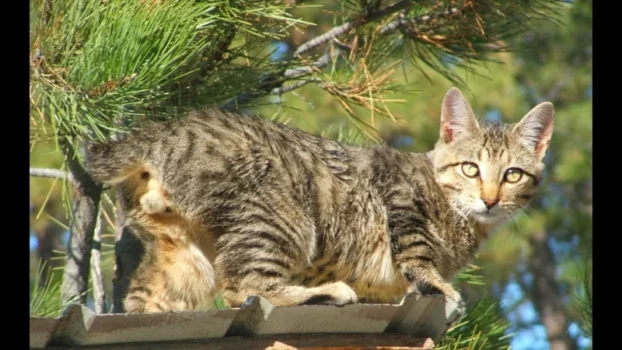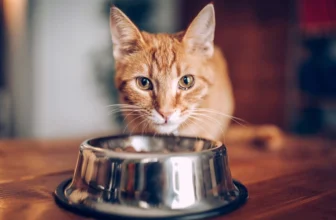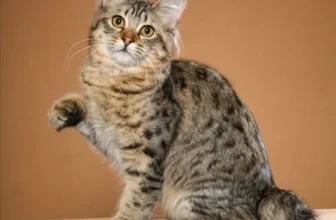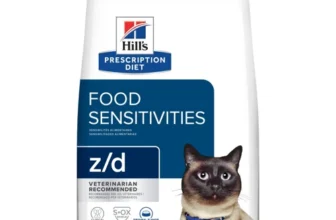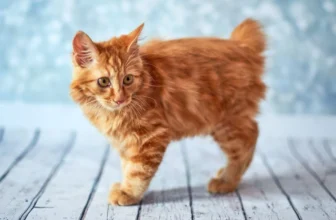As cat owners, we want nothing but the best for our feline friends, including their diet. While many pet owners choose to feed their American Bobtail cats commercial cat food, some prefer homemade diets. But is a homemade diet really the best option for your cat? In this article, we will explore the pros and cons of feeding your American Bobtail cat a homemade diet, important factors to consider before making the switch, how to transition your cat to a homemade diet, and the best homemade diet options for American Bobtail cats. Let’s dive in and find out what’s best for your furry companion.
Pros of Homemade Diets for American Bobtail Cats
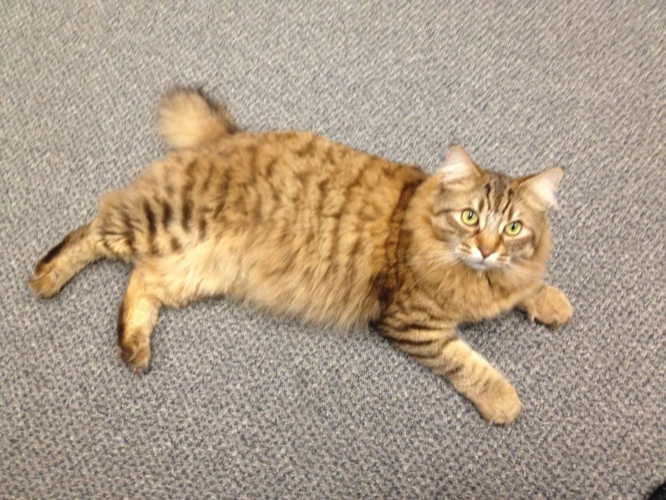
Feeding your American Bobtail cat a homemade diet is a great way to ensure that your feline friend is receiving the nutrition it deserves. Homemade diets offer a variety of benefits, including control over ingredients, financial savings, and customizable nutrition. With these advantages in mind, let’s explore how homemade diets can help to keep your American Bobtail cat healthy and happy.
Control over Ingredients
Having control over ingredients is one of the most significant advantages of feeding your American Bobtail cat a homemade diet. When you prepare your own cat food, you have complete control over the ingredients that go into the food, and you can be confident that your feline friend is eating healthy and nutritious meals. Homemade cat food allows you to avoid questionable ingredients such as artificial additives, fillers, and unhealthy preservatives that are frequently present in commercial cat food.
When it comes to homemade cat food, protein is the essential nutrient, and before you start preparing homemade meals for your Bobtail cat, you must ensure that you meet their nutrition requirements. An adult Bobtail cat requires at least 26% protein in their diet, and 9% of the protein must come from fats. You can find high-quality protein sources in poultry, meat, and fish. It is essential to select high-quality protein sources to prevent any nutritional deficiencies.
By preparing homemade cat food, you can save money in the long term. Although homemade cat food requires an investment in terms of the ingredients, it is often more affordable than commercial cat food that contains high-quality ingredients. You can purchase your ingredients in bulk, which not only makes the ingredients more cost-effective but also reduces the number of trips to the store to purchase cat food.
Lastly, homemade cat food allows you to customize and adjust the nutrition according to your cat’s individual needs. You can cater the food according to your cat’s age, overall health, and even any allergies they may have. For instance, if your cat is overweight, you can select a low-fat diet to promote weight loss. In contrast, if your cat has mobility issues, you can incorporate foods that promote joint health.
However, there are also potential risks associated with feeding your American Bobtail cat a homemade diet that you should be aware of. It is crucial to make sure that you are balancing macronutrients properly and avoid making any mistakes in preparing homemade cat food that could affect your cat’s health.
Financial Savings
One of the major benefits of feeding your American Bobtail cat a homemade diet is the financial savings. Compared to buying commercial cat food, which can be costly, preparing food at home can be more affordable.
To further illustrate the point, we’ve prepared a table comparing the cost of homemade cat food to commercial cat food.
| Food type | Cost per serving (4 oz) | Cost per month* |
|---|---|---|
| Homemade chicken and rice | $0.50 | $15.00 |
| Commercial chicken and rice | $0.75 | $22.50 |
| Homemade salmon and sweet potatoes | $0.75 | $22.50 |
| Commercial salmon and sweet potatoes | $1.20 | $36.00 |
As we can see, the cost per serving for homemade cat food is significantly lower compared to commercial cat food. Switching to homemade food can also help you save money in the long run by reducing the risk of health issues that may result from a poor diet.
It is important to note that the cost of homemade cat food may vary depending on the ingredients you use. However, by buying ingredients in bulk and preparing larger batches of food, you can save money and ensure your cat is getting high-quality nutrition.
In conclusion, feeding your American Bobtail cat a homemade diet can be both cost-effective and beneficial for their health. However, it is important to do research on their nutritional needs and to properly balance their diet with the right amounts of protein, fat, and carbohydrates. Additionally, it may be necessary to add supplements to their food to ensure they are getting all the necessary nutrients. By avoiding common mistakes and thoroughly understanding your cat’s dietary requirements, you can create a homemade diet that is both affordable and healthy.
Customizable Nutrition
Having the ability to customize the nutrition of your American Bobtail cat is one of the biggest advantages of feeding them a homemade diet. With a commercial cat food, you don’t have any control over the ingredients and the nutrient content. On the contrary, with homemade diets, you get to decide what your cat eats and how much of each nutrient they receive.
Customizable nutrition allows you to tailor the diet according to your cat’s specific needs, taking into consideration their age, weight, activity level, and health condition. You can also add supplements or ingredients that cater to your cat’s health requirements, such as omega-3 fatty acids for a healthy coat and joints or probiotics for optimal digestion.
Below is a table of some of the common ingredients used in homemade cat diets and their recommended serving sizes per meal based on the cat’s weight:
| Ingredient | Serving Size per Meal (ounce) |
|---|---|
| Chicken breast | 0.5-1 |
| Ground beef | 0.5-1 |
| Turkey thigh meat | 0.5-1 |
| Liver (chicken, beef, or pork) | 0.1-0.2 |
| Salmon (cooked or canned) | 0.2-0.3 |
| Bone broth | 3-4 |
| Cooked vegetables (carrots, peas, spinach, etc.) | 0.2-0.4 |
| Brown rice | 0.2-0.4 |
| Sardines (canned in water) | 0.1-0.2 |
It’s important to note that the recommended serving sizes may vary based on your cat’s weight, age, and activity level. Additionally, always talk to your veterinarian before making any changes to your cat’s diet to ensure that they are receiving a balanced and complete meal.
Customizable nutrition is a great advantage of feeding your American Bobtail cat a homemade diet. With careful planning and consultation with your veterinarian, you can provide a healthy and personalized diet that meets your cat’s specific needs.
Cons of Homemade Diets for American Bobtail Cats
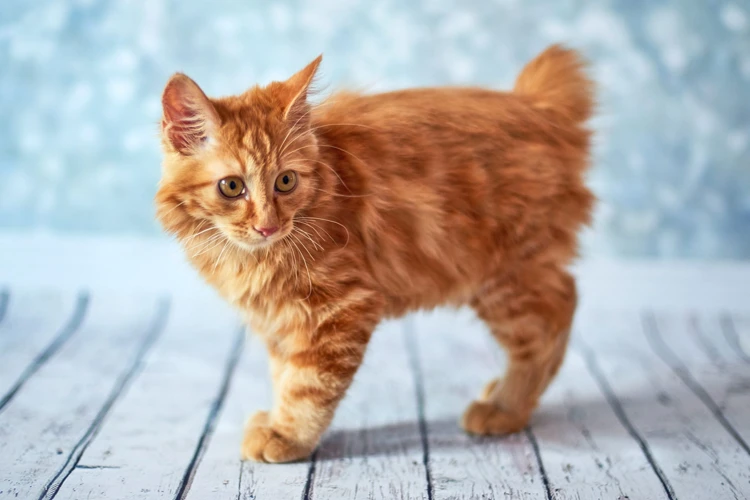
As much as homemade diets for American Bobtail Cats offer several benefits, there are also some drawbacks that pet owners should consider before deciding to make a switch. It’s important to weigh the pros and cons carefully since the consequences of a poorly-planned homemade diet can be severe. Let’s take a closer look at some of the potential downsides of feeding your American Bobtail Cat homemade food.
Time-Intensive Preparation
One of the cons of feeding your American Bobtail cat a homemade diet is the time-intensive preparation that comes along with it. Creating homemade meals for your feline friend requires thorough planning and preparation, which can definitely be a challenge for busy pet owners.
Here are some of the tasks that make preparing homemade cat food time-consuming:
- Researching and selecting appropriate ingredients, including protein sources, veggies, and grains
- Weighing and measuring ingredients properly to ensure accurate nutritional values
- Cooking, blending, and/or chopping ingredients according to the recipe
- Dividing the food into portion sizes and freezing excess portions for later use
All of these tasks can take a considerable amount of time and effort, and many pet owners may find it difficult to fit them into their already-packed schedules. Additionally, if all of these steps are not executed properly, your cat may not receive a balanced and nutritious diet.
However, it’s important to note that homemade diets can be made easier with proper planning and organization. Many pet owners find that meal prepping in bulk and storing portions in the freezer can help cut down on preparation time during the week.
When transitioning to a homemade diet for your American Bobtail, it’s important to consider whether you have the time and energy to commit to proper preparation. If you find that homemade meals are too time-consuming or stressful, there are high-quality commercial diets available that can still provide your cat with all the necessary nutrients.
To make sure your homemade meals provide all the essential nutrients, it’s important to research and use the best protein sources available for American Bobtail cats. You can find more information on this topic in our article on the best protein sources for American Bobtail cats.
Risk of Nutrient Imbalances
When feeding an American Bobtail cat a homemade diet, there is a potential risk of nutrient imbalances that can arise. This is because creating a balanced meal for your feline friend requires careful attention to detail in terms of selecting the right ingredients and determining the correct proportions.
Nutrient Deficiencies: If an American Bobtail cat’s diet does not provide essential nutrients such as vitamins, minerals, and amino acids, it can lead to nutrient deficiencies over time. This can result in a wide range of health problems such as anemia, stunted growth, weak immune system, and loss of weight.
Nutrient Excesses: On the other hand, feeding your cat too much of certain nutrients can also be harmful. For instance, feeding too much vitamin A can result in bone and joint pain, while excessive vitamin D can lead to kidney failure.
To avoid these nutrient imbalances, it is important to create a well-balanced diet that meets your cat’s specific nutritional needs. Consulting with a veterinarian who specializes in nutrition can help you understand these requirements and guide you in selecting the right ingredients.
It is also important to properly educate yourself about cat nutrition. Understanding cat nutrient requirements, sourcing and selecting high-quality ingredients, and calculating the right proportions can help minimize the risk of nutrient imbalances.
Here is an example of a possible homemade diet recipe for an American Bobtail cat that includes all the essential nutrients:
| Protein | Fat | Carbohydrates | Calcium | Phosphorus | Taurine | Vitamin A | Vitamin E | Thiamine |
|---|---|---|---|---|---|---|---|---|
| Chicken breast | Salmon oil | Brown rice | Calcium carbonate | Chicken liver | Chicken heart | Carrots | Spinach | Pork liver |
| 30% | 5% | 40% | 1% | 0.5% | 0.2% | 5000 IU/kg | 50 IU/kg | 3 mg/kg |
This is just an example, and it is important to keep in mind that each cat has their unique nutritional requirements. Properly researching and understanding the nutritional requirements of your American Bobtail cat can help minimize the risk of nutrient imbalances and ensure your furry friend receives a well-balanced, homemade meal.
Potential Health Hazards
When it comes to feeding American Bobtail cats homemade diets, there are a few potential health hazards to be aware of. These include:
- Bacterial infections: Raw meat and other uncooked ingredients in homemade diets can carry harmful bacteria such as Salmonella and Listeria, which can cause serious health issues for cats and their owners.
- Parasites: Homemade diets may contain parasites such as Toxoplasma gondii, which can cause toxoplasmosis in both cats and humans.
- Nutrient deficiencies: Without careful planning and monitoring, homemade diets can lack essential nutrients such as vitamins and minerals, which can lead to serious health issues such as blindness, organ failure, and even death.
- Food allergies: Cats, like humans, can develop food allergies that can cause skin irritation, digestive upset, and other health issues. Homemade diets containing novel ingredients may increase the risk of triggering these allergies.
- Unbalanced diets: Homemade diets that are not properly balanced can lead to health issues such as obesity, dental problems, and gastrointestinal issues.
It is important to note that these health hazards can be mitigated with proper preparation and planning. It is crucial to consult with a veterinarian before feeding your American Bobtail cat a homemade diet, as they can recommend safe and appropriate recipes and provide guidance on meeting your cat’s nutritional needs. Additionally, it is essential to use high-quality ingredients and practice strict food safety measures when preparing homemade diets, such as washing hands and surfaces thoroughly and avoiding cross-contamination. Regular monitoring and adjustment of the diet can also help prevent nutrient imbalances and other health issues.
Important Factors to Consider Before Switching to a Homemade Diet
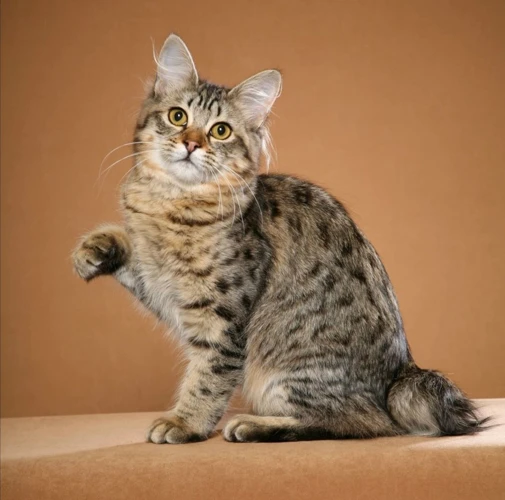
Before making any significant changes to your American Bobtail cat’s diet, there are numerous important factors to take into account. Switching to a homemade diet requires careful consideration of a variety of different factors, ranging from the quality of the ingredients to the potential health hazards that may arise. By taking the time to consider these important factors, you can make an informed decision about whether a homemade diet is right for your American Bobtail cat and ensure that the transition process goes as smoothly as possible. Let’s take a closer look at some of the most crucial factors to consider before you make the switch.
Consultation with a Veterinarian
When considering a homemade diet for your American Bobtail Cat, it is crucial to seek professional guidance from a veterinarian. They can help determine if a homemade diet is the right choice for your cat’s specific needs and health status. During a consultation, your veterinarian will evaluate your cat’s overall health, nutritional requirements, and any pre-existing medical conditions that could affect their dietary needs.
Here are some essential points to discuss with your veterinarian:
| Topic | Details |
|---|---|
| Nutrient Requirements | Your veterinarian will provide guidance on the specific nutrient requirements of your American Bobtail cat. They will also alert you about any deficiencies to avoid. |
| Medical History | Provide your veterinarian with a complete medical history of your cat. Any underlying conditions may require specific dietary restrictions or nutrient adjustments. |
| Dietary Restrictions | If your cat has any food sensitivities or allergies, your veterinarian can suggest alternate ingredients to replace those foods in the homemade diet. |
| Supplementation | Your veterinarian may recommend supplements that may be required to ensure that your cat meets their daily nutrient needs. This is especially important for homemade cat diets. |
| Feeding Schedule and Portion Control | Your veterinarian will recommend portion size and feeding schedule customized to your cat that meets their unique nutritional requirements. |
| Health Monitoring | Your veterinarian will advise you on what signs and symptoms to watch for to evaluate the success of a homemade diet for your American Bobtail Cat. They can also suggest monitoring tools like regular blood tests. |
A veterinarian consultation is a vital step in planning to feed an American Bobtail Cat a homemade diet. A qualified veterinarian can help you develop a diet that meets all of your cat’s unique nutritional needs while minimizing any risks of nutrient deficiencies or medical issues.
Quality of Ingredients and Food Safety
When it comes to feeding your American Bobtail Cat a homemade diet, ensuring the quality of ingredients and food safety should be a top priority. This will help prevent any potential health hazards and ensure that your cat is receiving the necessary nutrients for optimal health.
One way to ensure the quality of ingredients and food safety is by sourcing high-quality ingredients from trusted sources. This may include purchasing ingredients from reputable pet stores or using fresh ingredients from a grocery store. Additionally, it is important to choose ingredients that are appropriate for your cat’s nutritional needs and do not contain any harmful substances, such as toxic plants or preservatives.
To further ensure the safety of the homemade diet, it is important to properly store and handle the ingredients. This includes storing ingredients in a clean and secure area, properly thawing frozen ingredients, and thoroughly washing any fruits or vegetables. Additionally, it is important to follow safe food handling practices when preparing the food, such as thoroughly washing surfaces and utensils and cooking the food to the appropriate temperature.
Here’s a table summarizing the key points to consider when evaluating the quality of ingredients and food safety for your cat’s homemade diet:
| Considerations | Actions to Take |
|---|---|
| Sourcing ingredients | Choose high-quality ingredients from trusted sources that are appropriate for your cat’s nutritional needs and do not contain any harmful substances |
| Storage and handling | Store ingredients in a clean and secure area, thaw frozen ingredients properly, and wash fruits or vegetables thoroughly. Follow safe food handling practices when preparing the food |
By taking the time to carefully evaluate the quality of ingredients and food safety, you can minimize the risks associated with feeding your American Bobtail Cat a homemade diet and ensure that your cat is happy and healthy.
Time and Effort Commitment
Making homemade diets for your American Bobtail cat can be a time-consuming and laborious process. It requires careful planning, preparation, and monitoring to ensure that your pet is receiving a balanced and nutritious diet that meets their unique nutritional requirements. Here are some specific considerations to keep in mind regarding the time and effort commitment involved:
- Recipe Research: You need to research and find recipes that are specifically formulated for cats and meet their nutritional needs. This can take some time, especially if you’re new to homemade cat food. It’s important to use reputable sources and consult with a veterinarian to ensure that the recipes are complete and balanced.
- Ingredients Preparation: Once you have a recipe, you need to gather all the necessary ingredients, which may require shopping at multiple stores. You’ll also need to prepare the ingredients by chopping, cooking, or pureeing them to the right consistency for your cat.
- Portion Control: Homemade diets require accurate portion control to ensure that your cat is getting the right amount of nutrients. This may involve measuring out specific amounts of food and dividing them into individual servings.
- Batch Cooking: Preparing homemade cat food can be a batch process that requires a significant amount of time and effort. It may be necessary to cook and package several days or weeks’ worth of food at once, depending on your schedule and your cat’s needs.
- Storage: Homemade diets must be stored properly, such as in airtight containers in the refrigerator or freezer, to maintain their freshness and prevent spoilage. This also takes time and effort to manage and organize.
All of these factors require a significant time and effort commitment in order to provide your American Bobtail cat with a healthy and nutritious diet. However, some pet owners find that the benefits of homemade diets, such as control over ingredients and customizable nutrition, outweigh the time and effort required. It’s important to carefully consider your own lifestyle and schedule before deciding whether a homemade diet is right for you and your four-legged friend.
Monitoring and Adjusting the Diet
Keeping a close eye on your American Bobtail cat’s health and well-being is crucial when feeding them a homemade diet. This means monitoring and adjusting the diet as needed to ensure they are getting all the necessary nutrients in the correct proportions. Here are some key steps to follow:
- Regular Vet Check-Ups: Schedule regular check-ups with your veterinarian to monitor your cat’s health and ensure they are receiving the necessary nutrients. Blood tests can be performed to detect any nutrient deficiencies or imbalances.
- Observe Behavior and Health: Keep a close eye on your cat’s behavior and overall health. Look out for any changes in weight, energy levels, fur and skin quality, and any signs of illness. If you notice any changes, adjust their diet accordingly.
- Adjust Nutrient Proportions: If you notice any signs of nutrient deficiencies or imbalances, adjust the proportions of nutrients in their diet. For example, if your cat is not getting enough protein, increase their intake of high-quality protein sources, such as chicken or fish. If they are getting too much of a certain nutrient, such as fat, adjust the recipe to reduce the amount.
- Supplements: If necessary, add supplements to your cat’s diet to ensure they are getting enough of certain nutrients, such as vitamins or minerals. Consult with your veterinarian before adding any supplements to ensure they are safe and appropriate for your cat.
- Record-Keeping: Keep a detailed record of what your cat is eating, including the amounts and proportions of each nutrient. This will help you monitor their diet and make any necessary adjustments.
By monitoring and adjusting your American Bobtail cat’s diet as needed, you can ensure they are getting all the necessary nutrients for optimal health and well-being. Consult with your veterinarian and keep a close eye on your cat’s behavior and health to make any necessary adjustments to their diet.
Transitioning Your American Bobtail Cat to a Homemade Diet
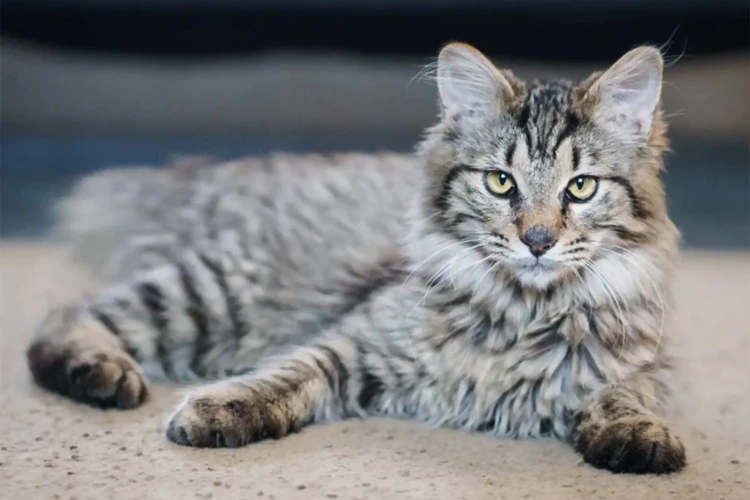
Switching your American Bobtail cat to a homemade diet might seem daunting, but with gradual transition and consistent observation and adjustment, it can be a successful move towards better nutrition. Transitioning your feline friend to a homemade diet requires patience and a commitment to record-keeping and quality ingredients. Here are some tips to help you make the change smoothly and effectively.
Gradual Transition
When it comes to transitioning your American Bobtail cat to a homemade diet, it’s crucial to do it gradually. Abruptly switching to a new diet can lead to digestive issues and other health problems. It’s recommended to take at least a week to switch your cat’s food from commercial to homemade.
Here are some tips for a smooth transition:
- Start by mixing a small portion of the new homemade food with the old commercial food. Begin with a ratio of 10% homemade to 90% commercial and gradually increase the amount of homemade food over several days or even up to a week.
- Observe your cat’s behavior carefully. If your cat seems to have difficulty transitioning, slow down the process or go back to the previous stage.
- If your cat experiences digestive problems, like diarrhea or vomiting, stop the transition immediately and consult with your veterinarian. It may be necessary to temporarily revert to the commercial food until your cat fully recovers.
- Gradually increase the amount of homemade food and decrease the amount of commercial food over the course of one to two weeks, until your cat is solely consuming the homemade diet.
It’s important to note that every cat is different, and some may take longer to adjust to a new food than others. Be patient and take your time to ensure a successful transition. Remember to always consult with your veterinarian before making any significant changes to your cat’s diet.
Observation and Adjustment
Once you have started transitioning your American Bobtail cat to a homemade diet, it is essential to monitor their progress and make necessary adjustments as needed. Here are some important observations and adjustments you should keep in mind during this process:
- Appetite: Observe your cat’s appetite and ensure that they are getting the right amount of food. If you notice a decrease or increase in their appetite, adjust the portions accordingly.
- Energy Level: Keep an eye on your cat’s energy level. If they seem lethargic or more hyperactive than usual, it could be an indication of an inadequate or excessive diet.
- Weight: Keep track of your cat’s weight by regularly weighing them. If you notice any variations, make adjustments to their diet to maintain a healthy weight.
- Stool: Pay attention to your cat’s stool. Their stool can provide clues about their diet’s effectiveness. If your cat’s stool is hard, dry, or infrequent, it may be an indication of constipation, and if it’s soft, runny, or smelly, it could be an indication of indigestion.
- Ailments: Be on the lookout for any illnesses, allergies, or health issues that may arise. These can be a result of the homemade diet, and adjustments may have to be made to accommodate your cat’s needs.
Remember that transitioning your American Bobtail cat to a homemade diet is a process that requires patience, careful observation, and necessary adjustments. By keeping these important observations and adjustments in mind, you can ensure that your cat has a balanced and healthy diet.
Record-Keeping
When feeding your American Bobtail cat a homemade diet, keeping records is crucial. Record keeping allows for easy monitoring of your cat’s diet and health, as well as adjustments to the diet as needed. Here are some important tips for record keeping:
- Document All Ingredients and Quantities: Keep a detailed list of all ingredients used in the homemade diet, along with their specific quantities. This information will be helpful in identifying any potential nutrient imbalances.
- Weigh Food Portions: Weighing your cat’s food portions is important for accurate tracking of caloric intake. This information can help prevent under or overfeeding, leading to potential health issues.
- Track Weight and Body Condition: Regularly weigh your cat and document any changes in weight or body condition. This information is helpful in ensuring the diet is meeting your cat’s nutritional needs.
- Note Any Changes in Behavior: Changes in behavior such as lethargy or loss of appetite may indicate health issues related to the diet. Document any behavioral changes and discuss them with your veterinarian.
- Log Any Health Concerns: If your cat experiences any health issues, such as vomiting or diarrhea, document the symptoms and discuss them with your veterinarian. This information can help identify potential issues with the diet.
Record keeping is essential when feeding your American Bobtail cat a homemade diet. It allows for easy monitoring of your cat’s nutrition and health, leading to a happy and healthy feline companion.
Best Homemade Diet Options for American Bobtail Cats
As a pet owner, you want to provide the best nutrition for your American Bobtail cat. Homemade diets offer a budget-friendly and customizable option, but not all recipes are created equal. When it comes to crafting a healthy homemade diet for your feline friend, it’s important to consider the balance of nutrients and potential health hazards. In this section, we will explore some of the best homemade diet options for American Bobtail cats, taking into account their unique dietary needs and preferences. Let’s discover what type of diet can keep your furry friend healthy and satisfied.
Complete and Balanced Recipes
When it comes to feeding your American Bobtail Cat a homemade diet, making sure that it is complete and balanced is essential for providing them with the nutrients they need to thrive. The term “complete and balanced” refers to a diet that contains all of the necessary nutrients in the correct proportions for your cat’s age, lifestyle, and health status.
So, how can you ensure that your homemade diet is complete and balanced? One option is to use a commercially available pet food recipe, which will typically provide instructions for creating balanced meals for your cat. Another option is to work with a veterinary nutritionist to develop a custom recipe that meets your cat’s specific nutritional needs.
When creating a homemade diet for your American Bobtail Cat, it’s important to include a variety of protein sources, as well as essential fatty acids, vitamins, and minerals. Some examples of protein sources include chicken, turkey, fish, and beef, while sources of essential fatty acids include fish oil and flaxseed.
It’s also important to pay attention to the quality of the ingredients you use in your homemade diet for your American Bobtail Cat. Look for high-quality, human-grade meats, and avoid using ingredients that are not safe or suitable for cats, such as garlic, onions, and chocolate. If you’re unsure about the safety of a particular ingredient, consult with your veterinarian or a veterinary nutritionist.
To ensure that your homemade diet is complete and balanced, it’s recommended to have it analyzed by a laboratory that specializes in pet food testing. This will allow you to ensure that your recipe provides all of the necessary nutrients in the correct proportions.
Creating complete and balanced homemade diets for your American Bobtail Cat requires careful attention to ingredient quality and nutritional content. By using commercially available pet food recipes or working with a veterinary nutritionist, you can ensure that your cat’s homemade diet meets all of their nutritional needs. And by having your homemade diet analyzed by a pet food testing laboratory, you can have peace of mind knowing that your cat is getting everything they need to be healthy and happy.
Raw Diets
One type of homemade diet that some American Bobtail cat owners choose to feed their pets is a raw diet. A raw diet typically consists of uncooked meats, bones, and organs that simulate what a cat would eat in the wild.
Advantages of Raw Diets
- Improved dental health: Chewing on raw bones can help clean a cat’s teeth and gums, reducing the risk of dental problems.
- Increased nutrient absorption: Raw foods are generally more easily digestible and offer higher nutrient absorption than cooked foods.
- Reduced risk of obesity: Raw diets tend to be lower in carbohydrates and higher in protein, which can help maintain a healthy weight.
Disadvantages of Raw Diets
- Risk of bacterial contamination: Handling raw meat can put both the cat and the owner at risk of bacterial infections.
- Possible nutrient imbalances: It can be challenging to ensure that the cat is receiving all necessary nutrients in the correct balance, especially if the owner is creating their own recipes.
- Cost: Raw diets may require more expensive cuts of meat, and added supplements may further increase the cost.
Considerations for Feeding a Raw Diet
- Consult with a veterinarian: A veterinarian can help ensure that the cat is receiving adequate nutrition and can advise on how to reduce the risk of bacterial contamination.
- Source high-quality meats: Look for hormone-free and antibiotic-free meats to reduce the risk of contamination.
- Include necessary supplements: A raw diet may require additional supplements to ensure all necessary nutrients are being provided.
- Monitor the cat’s health: Regular veterinary check-ups and monitoring changes in the cat’s health can help ensure that the diet is not causing any negative effects.
While a raw diet can offer potential health benefits for American Bobtail cats, it is important to carefully consider the risks and challenges associated with this type of diet. If you choose to feed your cat a raw diet, consult with a veterinarian and take precautions to minimize the risk of bacterial contamination.
Cooked Diets
Cooked diets are another option for American Bobtail cat owners interested in feeding their pets a homemade diet. These diets involve cooking the ingredients, which can help to eliminate potential pathogens and improve digestibility. There are various recipes available for cooked diets, and they can be tailored to meet the specific nutritional needs of American Bobtail cats.
Pros
One of the main benefits of cooked diets is that the cooking process can help to make the food more easily digestible for American Bobtail cats. Cooking can also help to kill harmful bacteria and other pathogens that may be present in raw ingredients, reducing the risk of foodborne illnesses.
Additionally, cooked diets can provide a great deal of variety in terms of ingredients, which can help to avoid boredom and provide a wider range of nutrients. Cooked diets can also be tailored to meet the specific nutritional needs of individual cats, which can be especially beneficial for those with dietary restrictions or health conditions.
Cons
One potential drawback of cooked diets is that the cooking process can lead to the loss of some nutrients, including certain vitamins and minerals. However, with proper planning and ingredient selection, it is possible to make a balanced and nutritious cooked diet for American Bobtail cats.
Another consideration is the time and effort required to prepare cooked diets. Unlike commercial pet foods or raw diets, which may require little to no preparation, cooked diets involve cooking and preparing ingredients in advance. This can be time-consuming, especially for busy pet owners.
Table: Comparison of Pros and Cons of Cooked Diets for American Bobtail Cats
| Pros | Cons |
|———————-|——————————————–|
| Easily digestible | Nutrient loss during the cooking process |
| Reduced risk of | Time and effort required for preparations |
| foodborne illnesses | |
| Customizable | |
| nutrition | |
| Variety in | |
| ingredients | |
Important Considerations
It is crucial to consult with a veterinarian before making any dietary changes for an American Bobtail cat. This is especially true when it comes to cooked diets, as it can be more challenging to ensure that all nutrient requirements are being met. A veterinarian can help to determine the best approach and provide guidance on ingredient selection and preparation methods.
It is also essential to ensure that the ingredients used in cooked diets are of high quality and are safe for consumption. This means selecting ingredients that are fresh and free from contaminants, as well as using safe preparation methods to minimize the risk of foodborne illnesses.
Finally, pet owners must be willing to commit the time and effort required for preparing cooked diets. This may involve finding time to cook and prepare ingredients, as well as monitoring the cat’s health and adjusting the diet accordingly. Keeping detailed records of ingredient amounts and feeding schedules can help to make this process more manageable.
Conclusion
Ultimately, deciding whether or not to feed your American Bobtail cat a homemade diet is a personal choice that requires careful consideration of the pros and cons. On the one hand, homemade diets can offer greater control over ingredients, save money, and provide customizable nutrition. On the other hand, they require time-intensive preparation, carry a risk of nutrient imbalances, and pose potential health hazards.
Before making any changes to your cat’s diet, it is important to consult with a veterinarian and thoroughly research the quality and safety of ingredients. Switching to a homemade diet also requires a significant time and effort commitment, as well as ongoing monitoring and adjustment to ensure the diet remains complete and balanced.
If you do decide to transition your American Bobtail cat to a homemade diet, a gradual transition is recommended to allow their digestive system to adjust. Observing and adjusting the diet as needed, as well as keeping detailed records of the ingredients and nutrient levels, can help ensure your cat is receiving the proper nutrition.
Ultimately, whether feeding a homemade diet or a commercial diet, the health and well-being of your American Bobtail cat should be the top priority. With careful consideration and preparation, a homemade diet can be a viable option for providing your furry friend with the nutrients they need to thrive.
Frequently Asked Questions
1. Is it safe to feed my American Bobtail cat a homemade diet?
It can be safe as long as the diet is complete and balanced and the ingredients are of high quality. It is important to consult with a veterinarian and monitor the diet closely.
2. Can I save money by preparing homemade meals for my American Bobtail cat?
Yes, you can save money by buying ingredients in bulk and preparing meals at home. However, it is important to ensure that the diet is nutritionally complete and balanced.
3. How much time does it take to prepare homemade meals for my American Bobtail cat?
It can take a significant amount of time to research, purchase ingredients, and prepare homemade meals for your cat. However, the time investment can be worth it for those who prioritize control over their cat’s diet.
4. What are some potential health hazards associated with homemade diets for American Bobtail cats?
Potential hazards include nutrient deficiencies or imbalances, bacterial contamination, and choking hazards from bones or improperly prepared raw meat.
5. How can I ensure that my homemade diet is nutritionally complete and balanced?
Consulting with a veterinarian and using complete and balanced recipes or pre-made supplements can help ensure that the diet meets your American Bobtail cat’s nutritional needs.
6. Can I feed my American Bobtail cat a raw diet?
Yes, you can feed your cat a raw diet, but it is important to properly source and prepare the ingredients to minimize the risk of bacterial contamination.
7. Is it necessary to supplement my American Bobtail cat’s homemade diet?
It may be necessary to use supplements to ensure that the diet is complete and balanced. Consult with a veterinarian or veterinary nutritionist to determine if supplementation is needed.
8. Can older American Bobtail cats be transitioned to a homemade diet?
Older cats can be transitioned to a homemade diet, but it is important to do so gradually and with close monitoring to ensure that they are tolerating the new diet well.
9. How often should I adjust my American Bobtail cat’s homemade diet?
The diet should be adjusted as needed based on changes in the cat’s health, activity level, or age. Regular check-ins with a veterinarian can help determine if adjustments are necessary.
10. What are some common nutrient imbalances to watch out for in homemade diets for American Bobtail cats?
Potential nutrient imbalances include deficiencies in taurine, calcium, and vitamin D, as well as excesses of certain minerals like phosphorus. Consult with a veterinarian or veterinary nutritionist to help ensure your cat’s diet is balanced.

